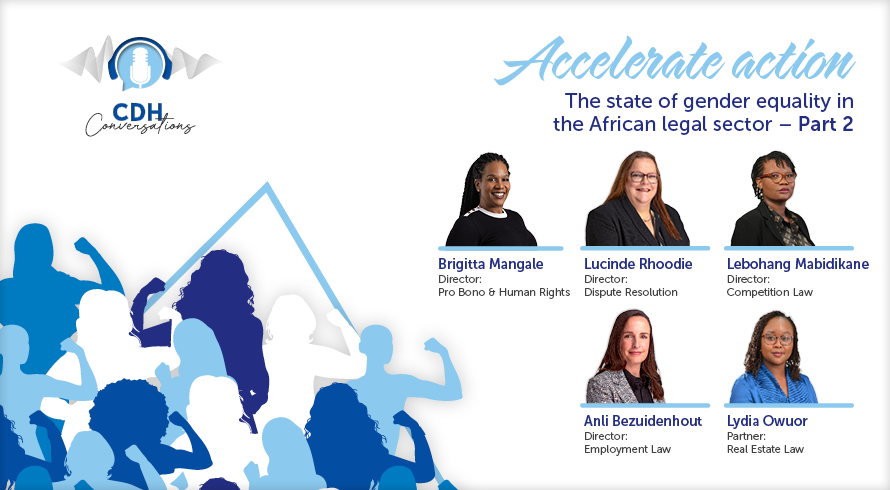Killed by its own kindness
At a glance
- The South African Revenue Service (SARS) has the power to raise assessments and collect taxes within the bounds of legislation, such as the Tax Administration Act 28 of 2011 (TAA).
- In the case of Lance Dickson Construction CC v Commissioner for SARS [2023] JDR 0259 (WCC), SARS levied an understatement penalty on a taxpayer for understating capital gains tax liability.
- The High Court found that SARS had imposed a penalty at a reduced rate, but without proper grounds, and concluded that SARS was precluded from imposing any understatement penalty. The case highlights the limits of SARS' power and the burden of proof on SARS to justify penalties.
Facts
The taxpayer in LDC developed immovable property and sold this to a related entity, Kwali Mark Construction CC (KMC), in 72 individual portions. The contract of sale, however, stipulated that KMC would only pay the purchase price for each portion as and when each portion was on-sold to the ultimate purchaser. The taxpayer in turn accounted for capital gains tax on the sale of a portion to KMC when it actually received the purchase consideration from KMC (i.e. when that portion was actually on-sold by KMC to the ultimate purchaser).
SARS did not accept this position adopted by the taxpayer and raised an assessment for the full amount of capital gains tax for all 72 portions simultaneously for the year of assessment in which these were transferred to KMC. Further, SARS levied a 25% understatement penalty on the taxpayer.
Dissatisfied with this, the taxpayer lodged an objection against SARS’ assessment. This was contested by SARS, and the dispute made its way to the Tax Court and then on appeal to a full bench of the High Court. SARS’ power to levy understatement penalties under sections 221 to 223 of the TAA, and in particular the quantum thereof, became of particular importance on appeal.
Sections 221 to 223 of the TAA
Section 221, read with section 222, of the TAA allows SARS to levy a penalty on a taxpayer where that taxpayer has understated its tax and this understatement does not stem from a bona fide inadvertent error. In LDC it was common cause between the parties that the taxpayer had understated its capital gains tax liability, and that this was not due to a bona fide inadvertent error.
Section 223 of the TAA then prescribes the rate at which SARS may levy this penalty. In short, and of relevance here, SARS can levy a 25% penalty where it finds the understatement is a standard case of the taxpayer not taking reasonable care in completing a tax return. Alternatively, SARS can levy a 50% penalty where it finds the understatement is a standard case of the taxpayer having no reasonable grounds for adopting a particular tax position.
Parties’ arguments
In LDC SARS levied a penalty of 25% on the taxpayer on the basis that the taxpayer’s understatement was a standard case of it not having taken reasonable care in completing its tax return.
Against this, the taxpayer argued that its understatement was a result of the tax position it adopted and was not causally connected to the process it followed. Therefore, the taxpayer concluded that SARS could not have levied an understatement penalty on the basis of the process the taxpayer had followed (i.e. the 25% understatement penalty), but rather SARS had levied a penalty on the tax position it had taken (i.e. the 50% understatement penalty) but at a reduced rate of 25%.
The Tax Court heard oral evidence from the SARS official that carried out the audit of the taxpayer. On the basis of this, the Tax Court found that SARS had actually concluded that the taxpayer had no reasonable basis for adopting the tax position it did (i.e. the 50% understatement penalty) but levied the penalty at a reduced rate. Despite this, the Tax Court saw fit to uphold SARS’ reduced penalty of 25%.
Court’s decision
On appeal, the High Court found that SARS’ witness was unable to distinguish between the two categories of understatement penalties in question. Therefore, the High Court also found that SARS had imposed a penalty for a standard case of a taxpayer having no reasonable grounds for adopting a particular tax position, but at the rate prescribed for a standard case of a taxpayer not taking reasonable care in completing a tax return. Unlike the Tax Court, however, the High Court did not uphold SARS’ ability to levy this reduced penalty.
In a sharp rebut of the Tax Court’s decision, the High Court found that the Tax Court had relied incorrectly on the case of Purlish Holdings (Pty) Ltd v Commissioner for SARS [2019] ZASCA 04 (Purlish). In that case the Supreme Court of Appeal found that the Tax Court is unable to unilaterally increase understatement penalties imposed by SARS. On that basis, the Tax Court in LDC stated that it was not empowered to increase the understatement penalty imposed on the taxpayer to 50%, but it was equally unable to allow the taxpayer to escape liability for the 25% penalty imposed by SARS.
The High Court, however, concluded that the Tax Court is empowered by section 129 of the TAA to increase understatement penalties but only where SARS had requested this in its pleadings before the Tax Court. Therefore, the court in LDC found that the decision in Purlish was made on the basis that SARS had not requested an increase in the understatement penalties in its pleadings, and not on the basis that the Tax Court lacked the power to increase the understatement penalties.
Arriving at this conclusion, the court in LDC looked to SARS’ pleading before it and found that SARS’ case for understatement penalties was made out on the basis of the taxpayer having not taken reasonable care in completing its tax return (and nothing else). Despite this, in its own evidence, SARS admitted that the understatement penalty was levied on the basis of the taxpayer having no reasonable grounds for the tax position adopted. Therefore, the court decided that SARS had not made out a case for levying the understatement penalty that it did, and was thus precluded from imposing any understatement penalty whatsoever.
Conclusion
LDC serves as a reminder of the limits on SARS’ power. Ironically, through its own lenience in levying a reduced penalty on the taxpayer, SARS undermined its own case with the result that the court ordered the understatement penalty to be remitted. This affirms that SARS is bound by the provisions of the TAA and can be seen as a practical example of how the burden of proof in section 102(2) of the TAA works, which states that SARS must prove the facts on which the imposition of the understatement penalty is based.
That being said, LDC also provides an escape route for SARS in that it sets out the power of the Tax Court to vary understatement penalties. Therefore, should SARS plan its pleadings accordingly, a taxpayer may have a nasty surprise in the Tax Court if its understatement penalties are increased. The LDC finding in this regard appears to also be based on the judgment in Purlish, where the Tax Court unilaterally increased understatement penalties without SARS pleading such increase. However, the Supreme Court of Appeal found there that it was not permissible and that only the penalty pleaded by SARS could be imposed.
The information and material published on this website is provided for general purposes only and does not constitute legal advice. We make every effort to ensure that the content is updated regularly and to offer the most current and accurate information. Please consult one of our lawyers on any specific legal problem or matter. We accept no responsibility for any loss or damage, whether direct or consequential, which may arise from reliance on the information contained in these pages. Please refer to our full terms and conditions. Copyright © 2026 Cliffe Dekker Hofmeyr. All rights reserved. For permission to reproduce an article or publication, please contact us cliffedekkerhofmeyr@cdhlegal.com.
Subscribe
We support our clients’ strategic and operational needs by offering innovative, integrated and high quality thought leadership. To stay up to date on the latest legal developments that may potentially impact your business, subscribe to our alerts, seminar and webinar invitations.
Subscribe



